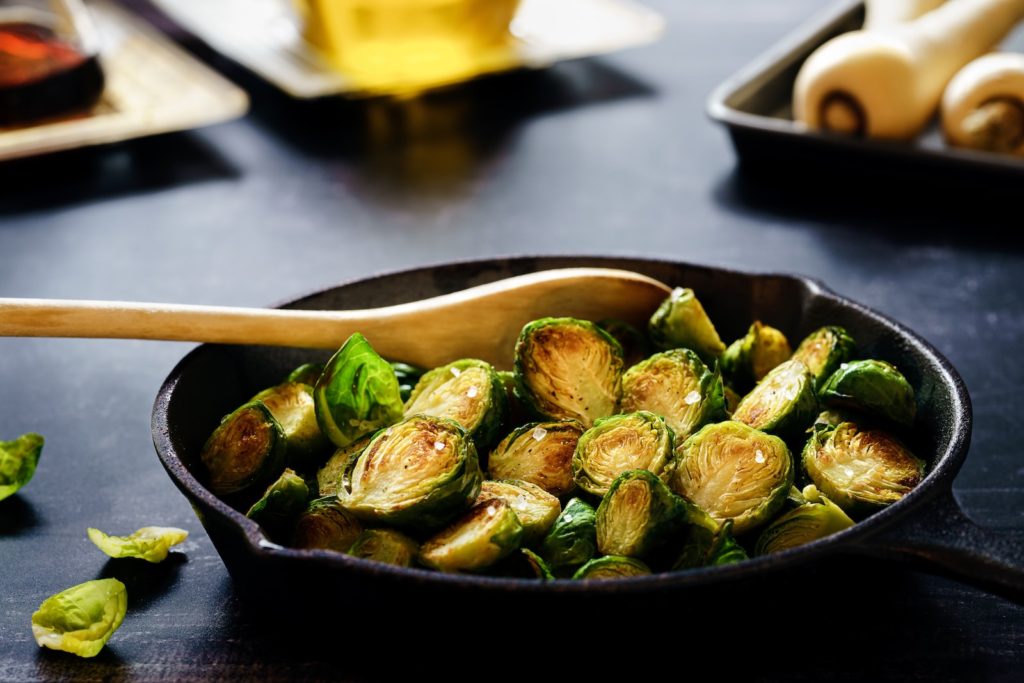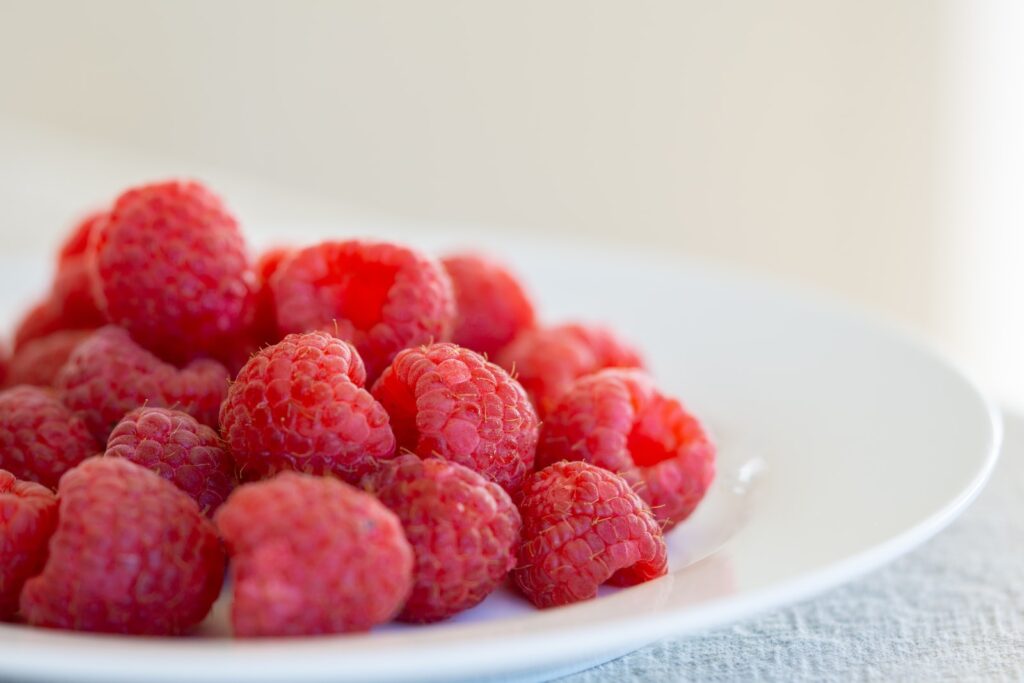On keto, the amount of net carbs you can eat per day depends on how big you’re and how much you exercise.
But, in general, if you keep your net carbs to under 30 grams per day, you’ll reach ketosis.
The reason you must eat less than 30 grams of net carbs per day is so your body can go into ketosis.
When you do this, your body must shift from relying on glucose to using fat as the primary energy source.
Once you reach ketosis, fat, a very energy-dense molecule, gets converted into ketones.
When your body uses fat and ketones as the main energy source, you are in nutritional ketosis. Ketones can be utilized by most of your body’s cells rather than glucose.
But the number of net carbs you eat per day can vary.
In this article, I’ll discuss exactly how many net carbs you can eat per day, in addition to the other factors that may affect how many carbs you can eat on keto.
How Many Net Carbs Can I Eat on Keto?
You can eat 20–50 grams of net carbs per day and still remain in ketosis. If you’re bigger and workout often, you can get away with eating 50 grams of net carbs per day. However, if you’re smaller and don’t exercise often, try to eat on the lower end of the spectrum.
How to Calculate Net Carbs
Net carbs = total carbs – fiber – sugar alcohols
Between 5 and 10% of your daily calories should come from net carbs, according to many keto diet guidelines, or 20–50 grams per day, depending on how big you’re and how much you exercise.
If you’re a very active person who exercises 4 to 5 times a week, you’re likely to be able to consume more carbohydrates and stay in ketosis.
If you are overweight and lead a sedentary lifestyle, we suggest keeping carb consumption to a minimum to ensure you stay in ketosis.
Avoid Direct Carbs
Don’t consume excessive carbohydrates while on the ketogenic diet, avoiding items like fruit, pasta, potatoes, cookies, donuts, candy, soda, juice, rice, and bread.
Certain foods contain extremely large quantities of carbohydrates and must be avoided in order to maintain and achieve ketosis.
What Carbs Can I Eat?
Let’s now discuss the best ketogenic-friendly carb sources that you can still incorporate into your diet plan, now that you understand which foods should be avoided entirely.
It is important to carefully track your carbohydrate intake when eating the foods listed below, as some still contain carbs.
1.) Keto Veggies
Non-starchy vegetables are low in calories, high in fiber, and nutrient-dense, making them an ideal keto-friendly carb.
Although non-starchy veggies are high in fiber, it does not count towards your carbohydrate count since fiber does not metabolize into sugar in your digestive tract as other carbohydrates do.
When reading nutritional labels, you must keep in mind that fiber is included in the carbohydrate count since fiber is still technically a total carb.
However, on keto, you must only count net carbs, not total carbs. That means that, on a keto diet, you can eat lots of these low-carb vegetables:
- Brussel sprouts
- Cauliflower
- Zucchini
- Spinach
- Broccoli
- Kale
Non-starchy veggies that grow above the ground are typically low in carbs (there are a few exceptions — always check on the internet if you aren’t sure.)
2.) Shirataki Noodles
Pasta… as a vegetable. You can still have that yummy pasta feeling with shirataki noodles. These noodles are great for keto dieters because they have less than 1g of carbs, thanks to them being a high fiber and water vegetable.
They can be found at your local health food store in pasta, linguini, or rice shapes.
Shirataki noodles make a wonderful pasta substitution if you want to make a pasta dish!
3.) Olives
Polyphenols from olives can help reduce inflammation, protect cells from damage, lower blood pressure, and fight cancer, according to research.
Olives provide mostly fat, not carbs, making them an excellent choice for keto dieters.
Seven olives only equal 1g of carbs!
4.) Cauliflower
Despite its low carb content, cauliflower can still fill you up and keep your carb intake in check, as it contains only 2g of net carbs per cup.
Cauliflower can be a great replacement for rice and potatoes in many keto recipes.
You can make tasty cauliflower rice by processing raw cauliflower into rice-size bits and then pan or microwave cooking them in butter. You can also prepare cauliflower mashed with cream and butter for a tasty mashed potato substitute.
5.) Sugar-Free Dark Chocolate and Cocoa Powder
It is possible to opt for cocoa powder or sugar-free dark chocolate instead of eating sugary chocolate bars. They are packed with antioxidants.
Furthermore, chocolate is considered a ‘superfood’ because it provides critical nutrients to help you remain healthy.
Flavonols in dark chocolate may help reduce your blood pressure, which in turn may help reduce your risk of heart disease.
Consuming dark chocolate that contains 85% cocoa or more is important because anything less usually contains other higher carbohydrate ingredients that may interfere with ketosis.
A coconut and chocolate fat bomb is a fantastic low-carb snack you can make with cocoa powder or dark chocolate.
Simply combine cocoa powder, almond butter, and coconut oil in a bowl and microwave it until it becomes a smooth liquid.
After it cools down for half an hour, you will have a tasty, low-calorie treat. You may sweeten it a little more if you desire by adding a little stevia.
6.) Low-Carb Berries
Most other fruits are too high in carbohydrates, so they must be avoided. The one exception is berries. Being both low in carbs and high in fiber, berries are an excellent choice for the keto diet.
Berries are chock-full of antioxidants, which have been shown to provide anti-inflammatory effects and protect against disease.
Remember to keep your berry consumption in check if you want to lose weight, as they still contain some carbs.
7.) Avocados
It’s imperative for everyone on the ketogenic diet to eat avocados. Avocados are rich in important vitamins and minerals, as well as monounsaturated fat, which is important for maintaining a healthy diet.
The essential minerals your body excretes during the initial fat-adaptation phase can help be replenished with avocados.
An avocado only has 2–3g of net carbs per serving, which makes it the perfect ketogenic-approved fruit!
Conclusion
Your carb cravings may feel very intense when you first start keto but keep in mind that this is only temporary while your body adjusts to being an efficient fat-burner.
Your body will thrive if you fuel it with the nutrients it needs using the low-carb foods listed above, instead of high-carb foods.
These low-carb foods can help you stay satisfied if you consume them smartly, which will greatly reduce your cravings!
If you’re interested in starting a keto diet, here’s my article detailing the benefits of a keto diet and how to get started.
- Can You Still Lose Weight If You Aren’t in Ketosis? - February 8, 2023
- Can the Keto Diet Help With Depression? - February 8, 2023
- Why Does Processed Food Make You Fat? - January 2, 2023




